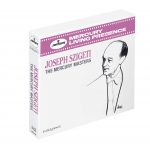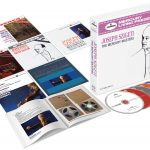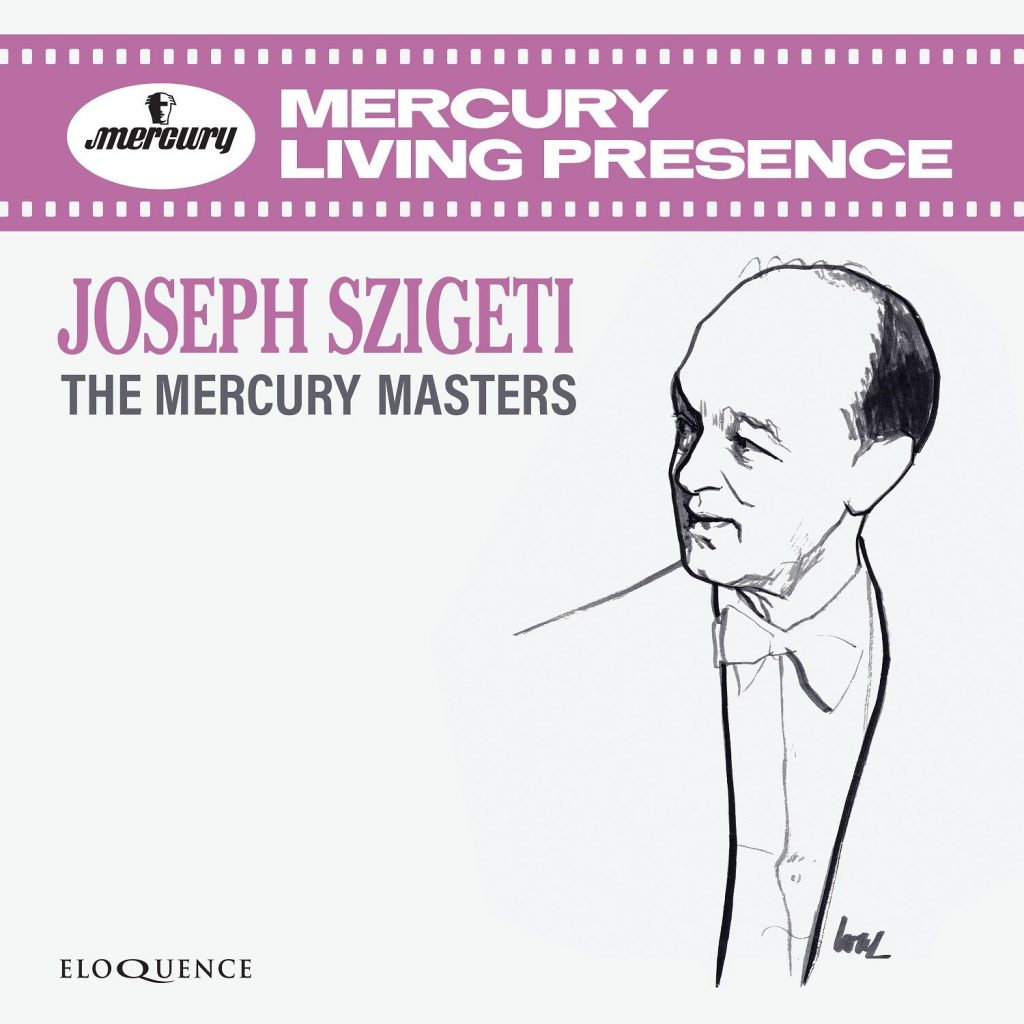
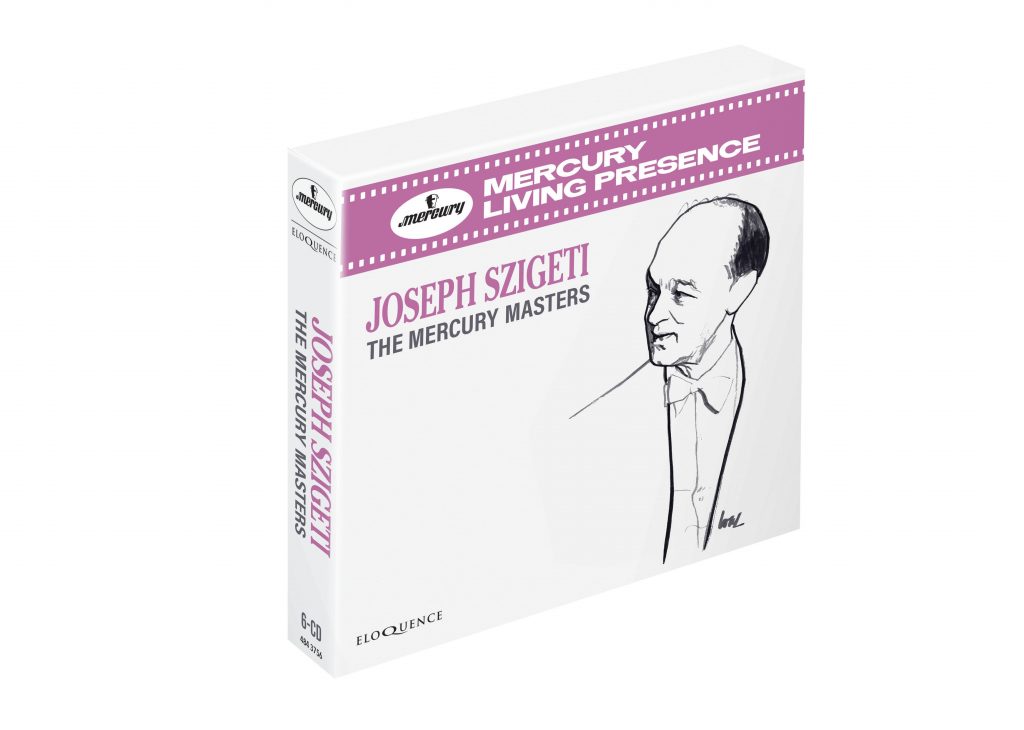
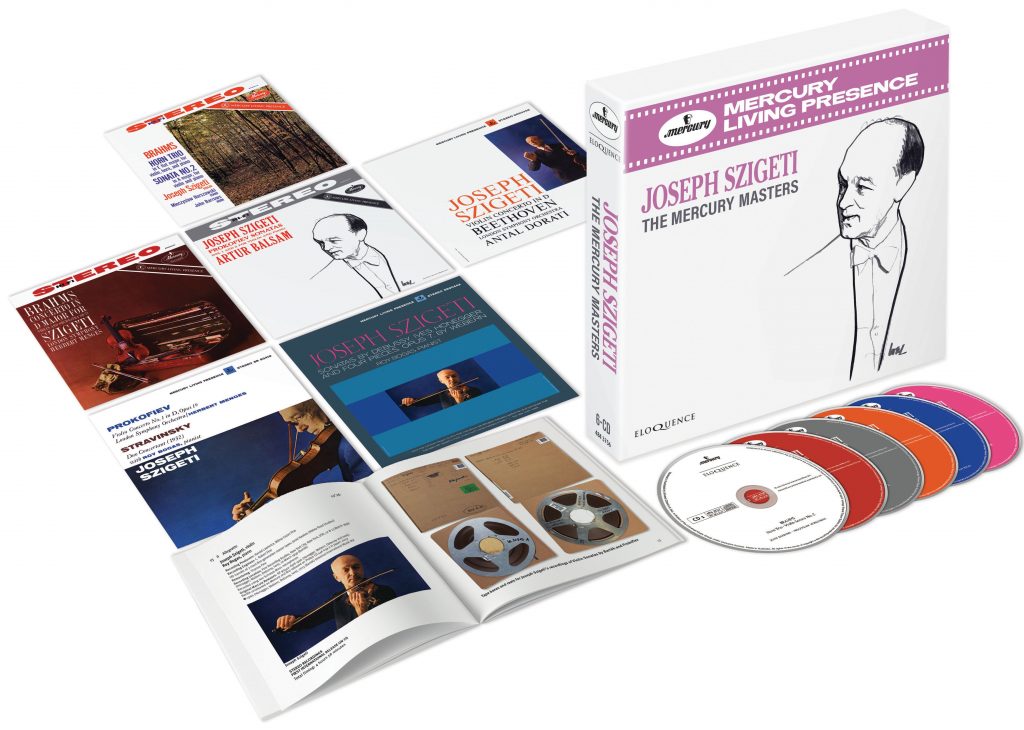
These Mercury recordings were made in New York and London during the autumn of Szigeti’s career, between 1959 and 1961. The violinist and his wife Wanda had emigrated to the US in 1940. By then his technique was less flexible, though his spirit and expressive power were undimmed. They include standard-repertoire concertos and sonatas – cherishable performances of Beethoven and Brahms – but also many accounts of the 20th-century masters whom he had known and worked with directly.
Szigeti was among the first to perform the Debussy and Ravel Sonatas, and won the approval of Prokofiev for his playing of the composer’s First Concerto. He premièred the First Rhapsody which Bartók had written for him, and they gave many recitals together. He had always wanted to record Bartók’s Second Sonata with the composer in the studio. Somehow it never happened and ironically this version with Roy Bogas was unpublished at the time: later released on the Philips label, it makes its digital début here. Szigeti's association with Ives went back to the Thirties, when he played the Fourth Sonata often in concert and recorded it, thus becoming one of the first musicians to record Ives.
The original Mercury tapes have been given a new high-definition transfer at Abbey Road Studios, and then remastered by Thomas Fine, son of the Mercury producer Wilma Cozart Fine and the label’s founder, Robert Fine. This original jacket collection also features a new appreciation of Szigeti by Tully Potter.
Released 17 February 2023.
CD 1
BRAHMS Horn Trio
Violin Sonata No. 2
John Barrows ∙ Mieczysław Horszowski
CD 2
BRAHMS Violin Concerto
Herbert Menges
CD 3
PROKOFIEV Violin Sonatas Nos. 1 & 2
Artur Balsam
CD 4
BEETHOVEN Violin Concerto
Antal Doráti
CD 5
PROKOFIEV Violin Concerto No. 1
Herbert Menges
STRAVINSKY Duo Concertant
Roy Bogas
CD6
HONEGGER Violin Sonata No. 1
WEBERN Four Pieces, Op. 7
DEBUSSY Violin Sonata
IVES Violin Sonata No. 4
BARTÓK Violin Sonata No. 2
Roy Bogas
CD 1
Recoding Producer: Wilma Cozart Fine
Musical Director: Harold Lawrence
Recording Engineer: C. Robert Fine
HD transfer of master 2-track tape: Jared Hawkes (Abbey Road Studios)
Remastering: Thomas Fine
Recording Location: Fine Recording Studios, New York City, New York, USA, 24 March 1959 (Violin Sonata) and 26 & 27 March 1959 (Horn Trio)
Recorded using two Schoeps M201 microphones direct to 2-track 1/4” tape
Original Mercury Release: SR 90210: 1962
P 1962 Universal International Music B.V.
CD 2
Recording Producer: Wilma Cozart Fine
Musical Director: Harold Lawrence
Chief Engineer: C. Robert Fine
Associate Engineer: Robert Eberenz
HD transfer of original 3–2 mix tape (mix by Wilma Cozart Fine; best available source): Jared Hawkes (Abbey Road Studios)
Remastering: Thomas Fine
Recording location: Watford Town Hall, London, UK, 26 & 28 June 1959
Recorded using three Schoeps M201 microphones
Original Mercury Release: SR 90225: 1960
P 1960 Universal International Music B.V.
CD 3
Recording Producers: Wilma Cozart Fine, Harold Lawrence
Recording Engineer: C. Robert Fine
HD transfer of master 2-track tape: Jared Hawkes (Abbey Road Studios)
Remastering: Thomas Fine
Recording Location: Fine Recording Studios, New York City, New York, USA, 7, 8 & 10 December 1959
Recorded using two Schoeps M201 microphones direct to 2-track 1/4” tape
Original Mercury Release: SR 90319: 1964
P 1964 Universal International Music B.V.
CD 4
Recording Producer: Wilma Cozart Fine
Musical Director: Harold Lawrence
Chief Engineer: C. Robert Fine
Associate Engineer: Robert Eberenz
HD transfer of first generation 3-track master tape: Jared Hawkes (Abbey Road Studios)
3–2 Channel Mix and Remastering: Thomas Fine
Recording Location: Watford Town Hall, London, UK, 17–20 & 22 June 1961
Recorded using three Schoeps M201 microphones
Original Mercury Release: SR 90358: May 1964
P 1964 Universal International Music B.V.
CD 5
Recording Producers: Harold Lawrence, Wilma Cozart Fine
Chief Engineer: C. Robert Fine
Associate Engineer: Robert Eberenz (Prokofiev)
HD Transfer of Harold Lawrence’s 3–2 mix tape (Prokofiev) and 2-track copy tape (Stravinsky); best available sources: Jared Hawkes (Abbey Road Studios)
Remastering: Thomas Fine
Recording Locations: Fine Recording Studios, New York City, New York, USA, 17 March 1959 (Stravinsky); Wembley (Brent) Town Hall, London, UK, 15 & 16 June 1960 (Prokofiev)
Recorded using two Schoeps M201 microphones (Stravinsky) & three Schoeps M201 microphones (Prokofiev)
Original Mercury Release: SR 90419: May 1965
P 1965 Universal International Music B.V.
CD 6
Recording Producers: Harold Lawrence, Wilma Cozart Fine
Recording Engineer: C. Robert Fine
HD Transfer of 2-track first-generation master tapes: Jared Hawkes (Abbey Road Studios)
Remastering: Thomas Fine
Recording Location: Fine Recording Studios, New York City, New York, USA, 12 & 13 March 1959 (Honegger, Webern, Debussy, Ives) and 16 March 1959 (Bartók)
Recorded using two Schoeps M201 microphones
Original Mercury Releases: SR 90442: April 1966 (Honegger, Webern, Debussy and Ives); 446 639-2 (Bartók) unreleased on Mercury; first released on Philips CD in Japan: 2013
P 1966 (Honegger, Webern, Debussy and Ives), 2013 (Bartók) Universal International Music B.V.
“Vintage Szigeti and authentic Brahms. Here is the Concerto with boldness and nobility. Following the performance with the score will reveal countless musical points overlooked by most interpreters … his playing strikes a perfect balance between mind and heart.” High Fidelity, March 1960 (Brahms Concerto)
“I must say that I am bowled over by it! The playing has a security and ease which I have not heard from Szigeti in years … It is an interpretation of subtle shadings and instinctive phrasing which actually sheds a new light on this beloved masterpiece.” Stereo Review, June 1960 (Brahms Concerto)
“Szigeti is the star of the show, although there is no slighting of either of his colleagues. There is tenderness and depth in the interpretations with splendid ensemble and stylistic rapport among the players. The horn tone is vibrant and the recording luminous.” Stereo Review, September 1960 (Brahms, Horn Trio, Second Sonata)
“A dedication and a matured concept that really comes to grips with the essential aesthetic of the music … represents the accumulated experience of a lifetime of distinguished devotion to the violin literature.” Stereo Review, November 1960 (Brahms Concerto)
“Although Szigeti’s edition is less technically polished than some others, I prefer it for its musical vitality.” High Fidelity, December 1961 (Brahms Concerto)
“No violinist of the present day is more worthy of special honor … The sonata uses the total coloristic spectrum of which the violin is capable … and no one plays [it] so hair-raisingly as Szigeti.” High Fidelity, May 1963 (Prokofiev, First Sonata)
“A performance, based upon a lifetime of study, that sustains the noblest mood of spiritual elevation … a record that many a younger violinist is certain to view with unconcealed envy.” High Fidelity, September 1964 (Beethoven Concerto)
“There is much to be gotten from this essentially introspective reading, particularly from those details of violin phrasing that are a Szigeti speciality, and one cannot help admiring the soloist’s interpretation and the beautifully played orchestral accompaniment.” Stereo Review, April 1965 (Beethoven Concerto)
“It is a pleasure to report that time has not even begun to dim that marvellous identification between performer and composer that has been Mr Szigeti’s mark in so much contemporary music. Everything sounds as though Prokofiev destined the concerto to be played Mr Szigeti’s way and no other. The work is a natural organism under Mr Szigeti’s fingers and bow.” New York Times, 1965 (Prokofiev, Concerto No 1)
“Szigeti’s identification with both these scores is almost as old as the music itself … The things that were cherishable about the early performances – the supreme feeling for the tension within a phrase, the dazzling imagination with which rhythmic features were detailed, the humor – are all present again in these new ones.” High Fidelity, September 1965 (Prokofiev/Stravinsky)
“This is a remarkable disc, which not only brings together three or four early twentieth-century pieces (depending on whether you count the Honegger) of real importance but also documents anew the interest that one of the century’s great violinists has long taken in latter-day writing for his instrument.” High Fidelity, July 1966 (Webern/Ives/Honegger etc)


